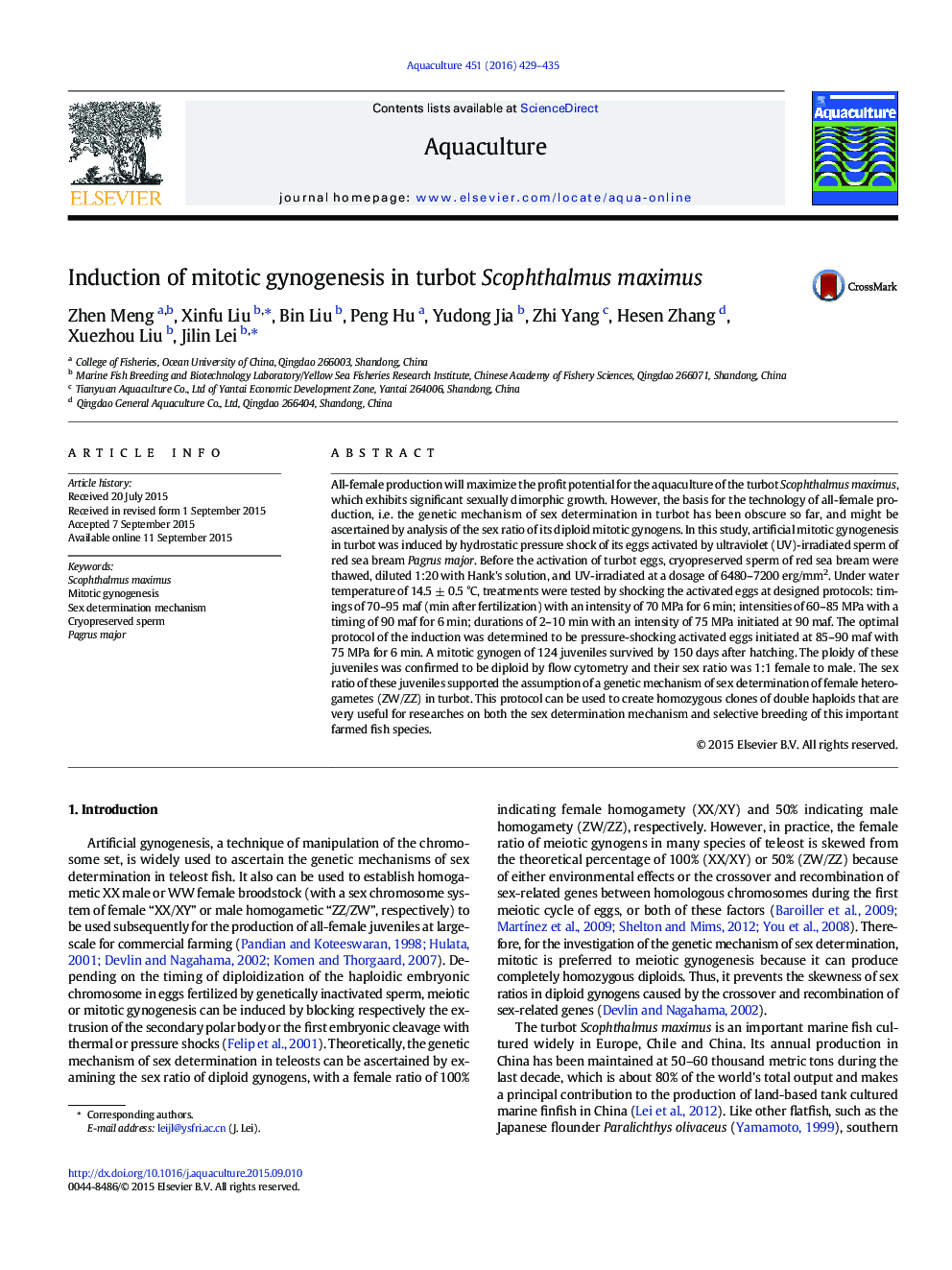| Article ID | Journal | Published Year | Pages | File Type |
|---|---|---|---|---|
| 8494124 | Aquaculture | 2016 | 7 Pages |
Abstract
All-female production will maximize the profit potential for the aquaculture of the turbot Scophthalmus maximus, which exhibits significant sexually dimorphic growth. However, the basis for the technology of all-female production, i.e. the genetic mechanism of sex determination in turbot has been obscure so far, and might be ascertained by analysis of the sex ratio of its diploid mitotic gynogens. In this study, artificial mitotic gynogenesis in turbot was induced by hydrostatic pressure shock of its eggs activated by ultraviolet (UV)-irradiated sperm of red sea bream Pagrus major. Before the activation of turbot eggs, cryopreserved sperm of red sea bream were thawed, diluted 1:20 with Hank's solution, and UV-irradiated at a dosage of 6480-7200 erg/mm2. Under water temperature of 14.5 ± 0.5 °C, treatments were tested by shocking the activated eggs at designed protocols: timings of 70-95 maf (min after fertilization) with an intensity of 70 MPa for 6 min; intensities of 60-85 MPa with a timing of 90 maf for 6 min; durations of 2-10 min with an intensity of 75 MPa initiated at 90 maf. The optimal protocol of the induction was determined to be pressure-shocking activated eggs initiated at 85-90 maf with 75 MPa for 6 min. A mitotic gynogen of 124 juveniles survived by 150 days after hatching. The ploidy of these juveniles was confirmed to be diploid by flow cytometry and their sex ratio was 1:1 female to male. The sex ratio of these juveniles supported the assumption of a genetic mechanism of sex determination of female heterogametes (ZW/ZZ) in turbot. This protocol can be used to create homozygous clones of double haploids that are very useful for researches on both the sex determination mechanism and selective breeding of this important farmed fish species.
Related Topics
Life Sciences
Agricultural and Biological Sciences
Aquatic Science
Authors
Zhen Meng, Xinfu Liu, Bin Liu, Peng Hu, Yudong Jia, Zhi Yang, Hesen Zhang, Xuezhou Liu, Jilin Lei,
